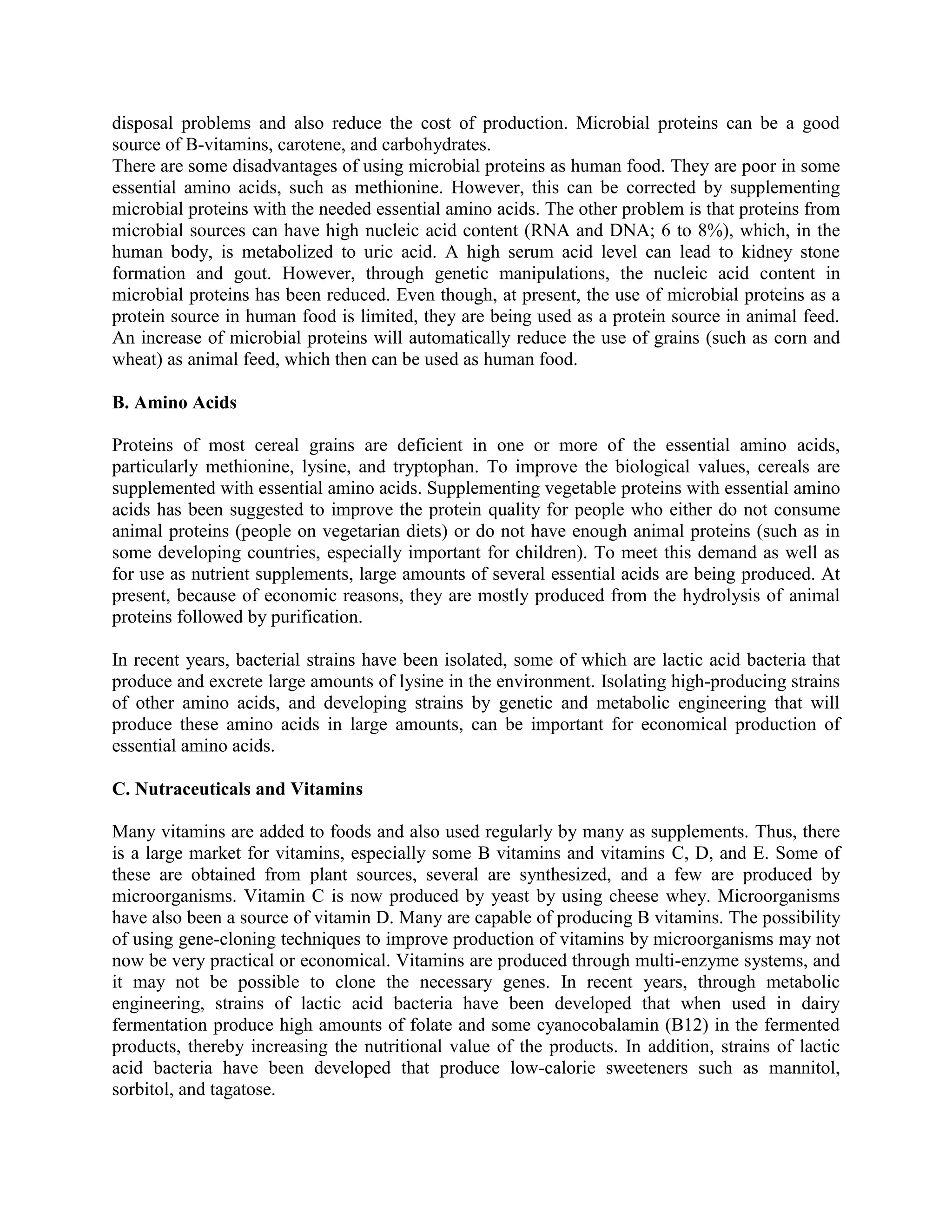This document discusses the use of microbial metabolites as food additives. It describes how microorganisms can be used to produce proteins, amino acids, vitamins, flavors, colors, stabilizers, and organic acids as additives through fermentation or genetic engineering. These additives can improve the nutritional value, flavor, color and texture of foods. The document provides examples of specific microorganisms used to produce important additives like lysine, vitamin C, diacetyl, monosodium glutamate, and citric acid. It notes that while microbial additives provide benefits, they must be approved as safe before use in foods.



